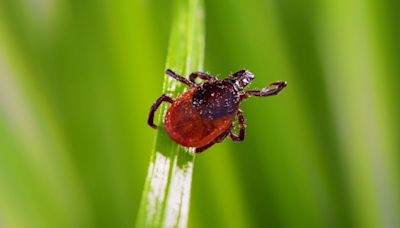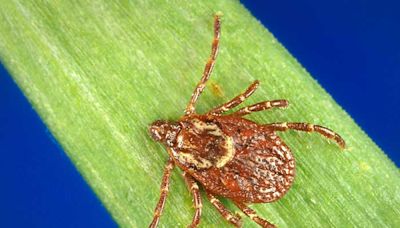Search results
- www.mayoclinic.org
- › …
- › Diseases & Conditions
Nov 15, 2022 · In the United States, the condition usually begins with the bite of the Lone Star tick. The bite transfers a sugar molecule called alpha-gal into the body. In some people, this triggers a reaction from the body's defenses, also called the immune system. It causes mild to severe allergic reactions to red meat, such as beef, pork or lamb.
Nov 14, 2023 · Lone Star tick. The Lone Star tick is mainly found in the Southern and Eastern U.S. Its scientific name is Amblyomma americanum. The Lone Star tick can spread: Ehrlichiosis due to Ehrlichiosis chaffeensis and Ehrlichiosis ewingii. Heartland virus disease. Southern tick-associated rash illness (STARI). Bourbon virus disease. Tularemia.
What are Lone Star Ticks? The lone star tick gets its name from the single silvery-white spot located on the female's back. These ticks attack humans more frequently than any other tick species in the eastern and southeastern states. Lone star tick bites will occasionally result in a circular rash, and they can transmit diseases.
The lone star tick is the most common tick reported to bite humans in the southeastern and southcentral U.S.A. (Masters et al. 2008). Various pathogens have been shown to enter the tick by blood feeding; however, most are not transmitted because the tick is not a competent vector (Goddard and Varela-Stokes 2009).
May 15, 2024 · At a glance. The lone star tick ( Amblyomma americanum) is widely distributed in the eastern, southeastern, and south-central United States. A. americanum is a very aggressive tick that bites humans. The adult female is distinguished by a white dot or “lone star” on her back.
Jun 11, 2021 · Lone Star Tick. Female. Male. Nymph. Larva. Range: Widely spread across the southeastern and eastern regions of the United States, including the eastern half of Texas, Oklahoma, Kansas and...
Jul 4, 2021 · In East Hampton, New York, Dempsey is seeing more Lone Star ticks, a relative newcomer to the area, and fewer black-legged ticks — resulting in less Lyme disease. And back on that Muir Beach...



